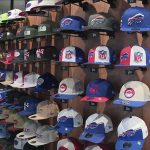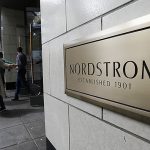Fitness trackers outsold smart watches by more than 3 to 1 in 2014, but are likely to propel faster growth of smart watches in coming years as consumer learn of their greater capabilities, according to the global market research firm GfK.
The research firm said its trends data show that 13.5 million health and fitness trackers were sold globally last year, compared to 4.1 million smart watches. With major companies expected to enter the market this year, GfK predicts that the combined market will leap to 51.2 million sales in 2015 – three times the size of 2014 – with both segments showing equal importance in this converging market.
Sales units (mn) 2014 2015
Smartwatch 4.0 26.1
Health & Fitness Tracker 3.5 25.0
Total 17.6 51.2
Table 1: GfK estimated global sales by volume[2]
Last year, actual sales of health and fitness trackers (HFT) easily outstripped smart watches. This was driven, in part, by the significantly lower average sales price of HFT, making these devices more affordable than full-feature smart watches. Another reason for the higher popularity of HFT according to a GfK survey of 5,000 smartphone owners across five countries[1] is the fact that a majority of consumers see activity tracking as being the most important function of a wearable – including a smart watch – at the present time.
“Many consumers are not yet aware of the additional benefits a smart watch has to offer,” said Dr Jan Wassmann, global product manager for Wearables at GfK. “We believe this will now change, driven by the marketing efforts of the industry this year. Added to this, there is a clear convergence of both segments, which started in the second half of 2014 – and we see this driving market growth. HFT manufacturers are introducing new models which incorporate smart functions, such as reading notifications and messages. And many new smart watches now come with heart rate sensors and activity tracking capabilities and are being marketed as hybrid fitness devices.”
GfK expects the smart watch market, in particular, to grow massively, boosted also by a growing sub-segment of independent devices with include a SIM card to connect directly to cellular networks – making these more akin to existing smart phones.
GfK's survey[1] found that over half (56 percent) of smartphone owners interviewed across five countries see this as an important capability that makes them more likely to buy a smart watch, as it gives them the freedom to leave their smart phone at home. In addition wearable growth is likely to be driven by more fashionable designed devices (e.g. analogue smart watches) or sensors included in jewelry, which will be more appealing to female consumers – an important segment which has remained almost untapped so far.
The biggest contribution to these global volumes is not surprisingly coming from the developed regions. In particular Western Europe will catch up with North America, which predominantly drove market growth in the past.
Smartwatch Health & Fitness Tracker
Sales units (mn) 2014 2015 2014 2015
W. Europe 0.8 5.4 4.0 7.1
Dev. APAC 0.8 5.3 2.5 4.5
N. America 1.2 7.4 4.8 8.5
Developed regions 2.8 18.1 11.3 20.1
C&E. Europe 0.2 1.3 0.6 1.1
China 0.5 3.6 0.9 2.3
Emg. APAC 0.2 1.4 0.2 0.4
S. America 0.1 0.6 0.2 0.5
ME & Africa 0.2 1.1 0.3 0.6
Emerging regions 1.2 8.0 2.2 4.9
Global 4.0 26.1 13.5 25.0
2: GfK estimated regional sales by volume[2]
Although Western European markets, like many other regions, did not see the expected uptake for the first three quarters of 2014, volumes jumped in the fourth quarter – driven by strong holiday sales and new model launches by known manufacturers. In Europe's biggest markets, Germany, Great Britain and France, actual sales[3] in Q4 accounted for 36 percent of the total volume sold in 2014. This leads to the conclusion that wearables are a popular gift during the holiday season and provide an optimistic outlook for 2015.
[1]GfK self-funded survey of 5000 smartphone owners in China, Germany, South Korea, UK and US. Online interviews were conducted in October 2014. The study findings are available (upon free registration) here: http://www.gfk.com/Industries/technology/Pages/Wearables.aspx
[2]GfK global trends and forecasting data.
[3]GfK retail sales data, tracking actual sales of wearables across 30 countries.









